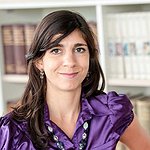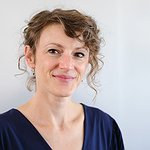
Focus Group 'Materiality'
The focus group 'materiality' is concerned with practices and situations that involve objects charged with religious meanings. Such object-centered approach includes a variety of phenomena: the use of digital technology to spread religious messages, the presence of sacred texts in religious practices, the employement of objects of art in religious experiences, the conceptualization of space in relation to religious buildings, to mention some. Materiality represents not only the practical use of objects in religious circumstances, but also the function of such objects in facilitating, in virtue of the intentions of their creation, the mediation from immanence to transcendence.
The centrality of material practices in religious traditions compels for a focus on the relationship between religion, materiality, and media. The field of religion and media has recently gained increasing academic attention, thus compelling scholars to take into account the religious implications of a variety of media objects. However, the field of religion and media is sometimes hesitant in abandoning a focus on Western media institutions and on contemporary media logic. The focus group materiality will broaden the field by exploring the role, functions, and correlations of material objects in the process of mediation. In specific, it will be concerned with the following research questions:
- What is the role of materiality within religions and which are the conditions that connote a material object as religious?
- What does the term 'media' refer to in relation to religion and materiality, and how do we conceptualize mediation?
- How does media and materiality facilitate, or hinder, contacts between different religious traditions? How does mediation work in different historical and geographical contexts?
Drawing from the work of, among others, Birgit Meyer, David Morgan, and Arjun Appadurai [i], the focus group explores the function of materiality in the creation of religious communities and aesthetic practices. From such perspective, materiality assumes the characteristics of what Birgit Meyer defines as “sensational forms,“ a term encompassing acts, imaginations, bodily sensations that mediate between the ordinary and the extra-ordinary.
The focus group materiality discusses mediation through empirically-informed examples. In particular, it focuses on:
- New and legacy media: the evolution of orality and textuality in relation to media technologies, from printing to social networks
- Visuality: the role played by religious art objects and paintings in mediation
- Sacred spaces: how materiality contributes to create physical and non-physical sacred spaces and how they are connected to the experience of the transcendent
In exploring such themes, the focus group materiality pays attention to mediation both in contemporary society and in historical perspective, as well as in European and Asian contexts. By adding complexity to the religion and media field thought a focus on the relevance of the material object, the focus group conceptualizes the relation between immanence and transcendence in terms of material mediation of the religious.
[i] Birgit Meyer, ed., Aesthetic Formations: Media, Religion, and the Senses, 2009 edition (Palgrave Macmillan, 2010); David Morgan, The Sacred Gaze: Religious Visual Culture in Theory and Practice (Berkeley: University of California Press, 2005); David Morgan, The Embodied Eye: Religious Visual Culture and the Social Life of Feeling (Berkeley: University of California Press, 2012); Arjun Appadurai, “Mediants, Materiality, Normativity,” Public Culture 27, no. 2 76 (May 1, 2015): 221–37, doi:10.1215/08992363-2841832.



